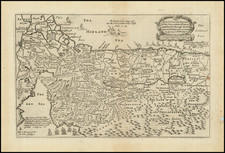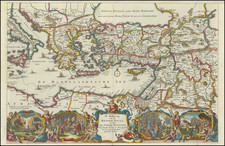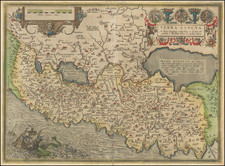The Expedition That Proved that the Dead Sea was Below Sea Level.
A fine and rare antique map of present-day central Israel, stretching from the Mediterranean coast through to the Dead Sea and Jordan River Valley. This map was executed as part of the Lunch US Navy expedition to map the Holy Land. The major result of this expedition was a triangulation survey that resulted in the conclusion that the Dead Sea was, in fact, below sea level, as had long been imagined.
Detail on the map is limited to areas that were actively explored during the expedition. The route to the Dead Sea was reached via Jerusalem, and once at the Dead Sea numerous soundings and other measurements were undertaken. From there, the expedition tracked north along the Jordan River, before exploring a wider area in the north of the region.
The Dead Sea expedition was executed in the period following the Mexican-American War when the U.S. Navy was one of the most important cartographic institutions in the world. Numerous expeditions were conducted during this time, and the Dead Sea expedition was one of these. Justified due to the possibility of opening up the Middle East to increased trade due to the advent of steamship navigation, the expedition also engaged in a number of scientific quests. The expedition was considered a success and Lynch was subsequently sent to Western Africa to explore the possibility of colonization. However, following the start of the Civil War, Lynch, like many of his colleagues including the great hydrographer Maury, would join the Confederacy, contributing to the end of the hegemony of US Navy mapping.
The exact publication in which this map appeared is uncertain. While it has been suggested that it appeared in the 1849 first report of the expedition, published in Washington, D.C., we have been unable to trace a digitized version that confirms this. Other sources place the map as having been published as part of an 1852 report, published in Baltimore. This rarer text seems to be the correct publishers, as it appears that E. Weber was operating in Baltimore at the time.












![[ Holy Altars and Aaron's Tunic ]](https://storage.googleapis.com/raremaps/img/small/98384.jpg)

![L. Rouwolfs Land-Reyse, gedaan van Aleppo door Babylonien Syrien en Palestina [shows Cyprus]](https://storage.googleapis.com/raremaps/img/small/56340.jpg)

![[Haifa] Situation Plan von der Deutschen Colonie bei Haifa rep.](https://storage.googleapis.com/raremaps/img/small/61139.jpg)